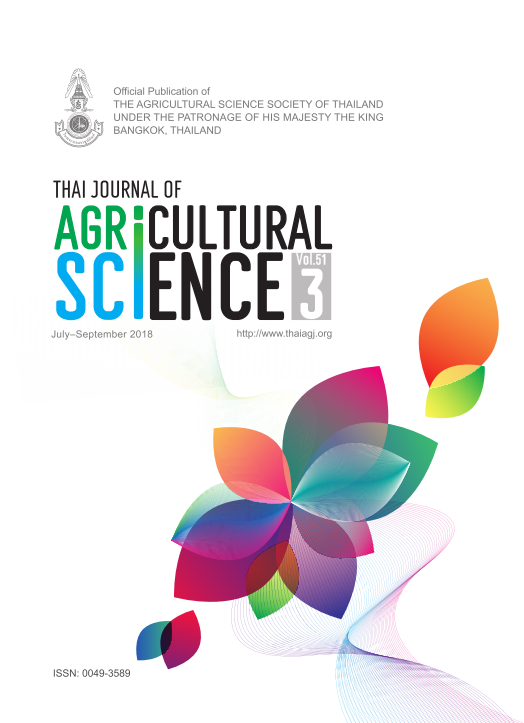Acetylcholinesterase (AChE): Potential Biomarker for Evaluating Pesticide Exposure on Egg and Tissue of Golden Apple Snail (Pomacea Canaliculata) from Huai−Saneng Reservoir, Surin Province, Thailand
Main Article Content
Abstract
The aim of this study was to evaluate pesticide exposure in egg and tissue of golden apple snail (Pomacea canaliculata), being collected from Huai−Saneng Reservoir, Surin Province by using AChE as bio−indicator. This is the pioneer work in Thailand with regards to the application of Acetylcholinesterase (AChE) as a situ biomarker in indicating pesticide contamination. The snail and its egg were sampled two times in the period of rice cultivating in June and July, 2017. There were 5 sampling stations (n = 10). The snail was classified based on its sizes: small, medium, and large. After studying the protein form by using 12.5% SDS−PAGE technique, it was that found that there were differences in protein expression from post−fertilization egg (pink color) and pre−hatching egg (white color). The results of Western blot analysis indicated that AChE of the egg in pink colored stage had 2 isoforms with different weights: 71 kDa and 66 kDa. However, there was only 71 kDa of AChE of that in white colored stage. The protein in 3 snail sizes was not different when compared to the snails from 2 sampling periods. Moreover, AChE expression in collected snail was higher than that in controlled group with having only 1 isoform (71 kDa). The AChE expression in the snail from stations 4 and 5 were lower than that from the other stations. After organochlorine and carbamate pesticide contamination in water was studied using test kit, it was found that there was contamination in every station in both periods and the highest was found in stations 4 and 5. Based on our results, we concluded that AChE expression in the egg and tissue of golden apple snail has a high potential to be used as an early warning signal indicating a pesticide contamination in the environment.


